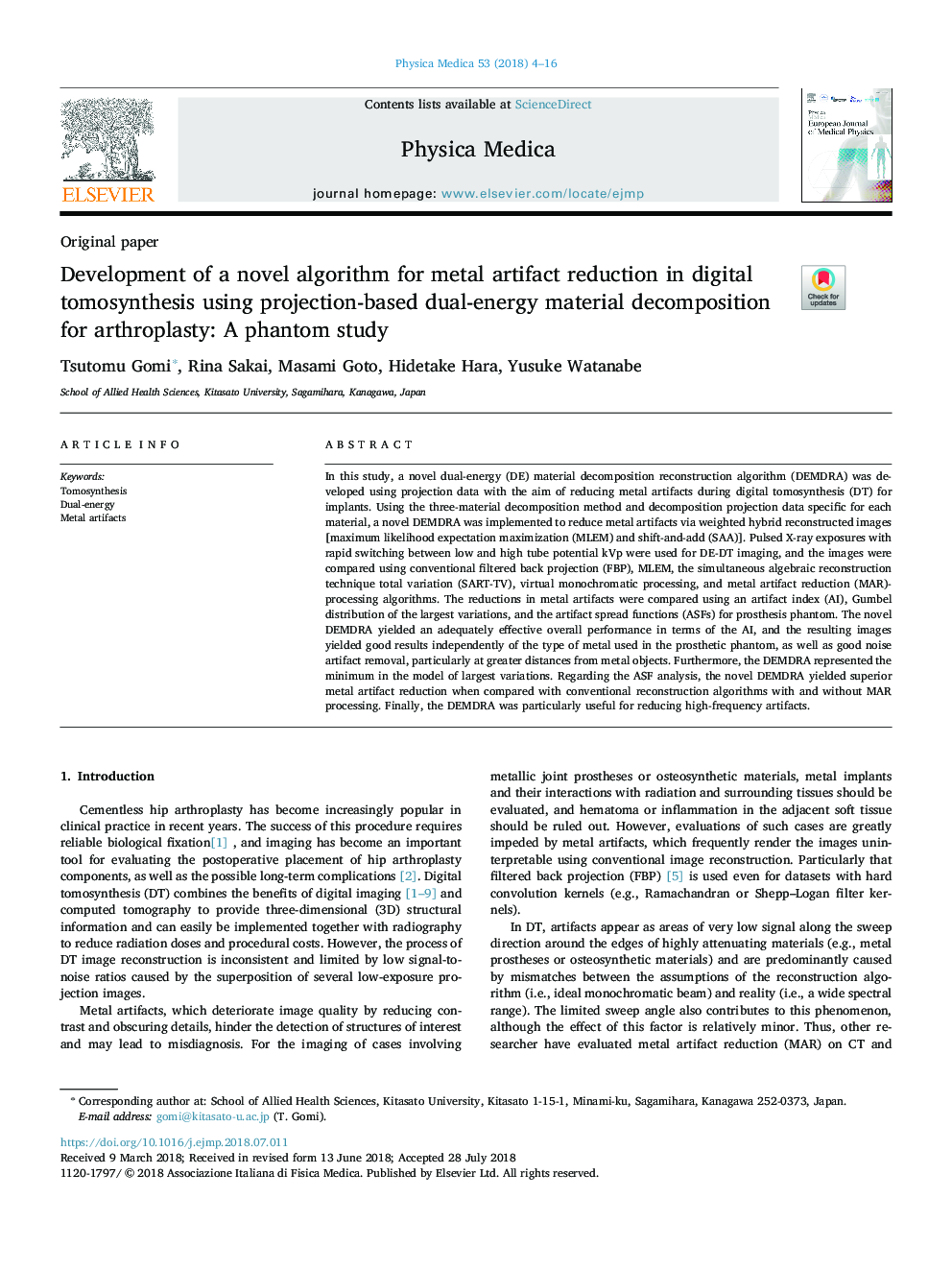| Article ID | Journal | Published Year | Pages | File Type |
|---|---|---|---|---|
| 8248353 | Physica Medica | 2018 | 13 Pages |
Abstract
In this study, a novel dual-energy (DE) material decomposition reconstruction algorithm (DEMDRA) was developed using projection data with the aim of reducing metal artifacts during digital tomosynthesis (DT) for implants. Using the three-material decomposition method and decomposition projection data specific for each material, a novel DEMDRA was implemented to reduce metal artifacts via weighted hybrid reconstructed images [maximum likelihood expectation maximization (MLEM) and shift-and-add (SAA)]. Pulsed X-ray exposures with rapid switching between low and high tube potential kVp were used for DE-DT imaging, and the images were compared using conventional filtered back projection (FBP), MLEM, the simultaneous algebraic reconstruction technique total variation (SART-TV), virtual monochromatic processing, and metal artifact reduction (MAR)-processing algorithms. The reductions in metal artifacts were compared using an artifact index (AI), Gumbel distribution of the largest variations, and the artifact spread functions (ASFs) for prosthesis phantom. The novel DEMDRA yielded an adequately effective overall performance in terms of the AI, and the resulting images yielded good results independently of the type of metal used in the prosthetic phantom, as well as good noise artifact removal, particularly at greater distances from metal objects. Furthermore, the DEMDRA represented the minimum in the model of largest variations. Regarding the ASF analysis, the novel DEMDRA yielded superior metal artifact reduction when compared with conventional reconstruction algorithms with and without MAR processing. Finally, the DEMDRA was particularly useful for reducing high-frequency artifacts.
Related Topics
Physical Sciences and Engineering
Physics and Astronomy
Radiation
Authors
Tsutomu Gomi, Rina Sakai, Masami Goto, Hidetake Hara, Yusuke Watanabe,
